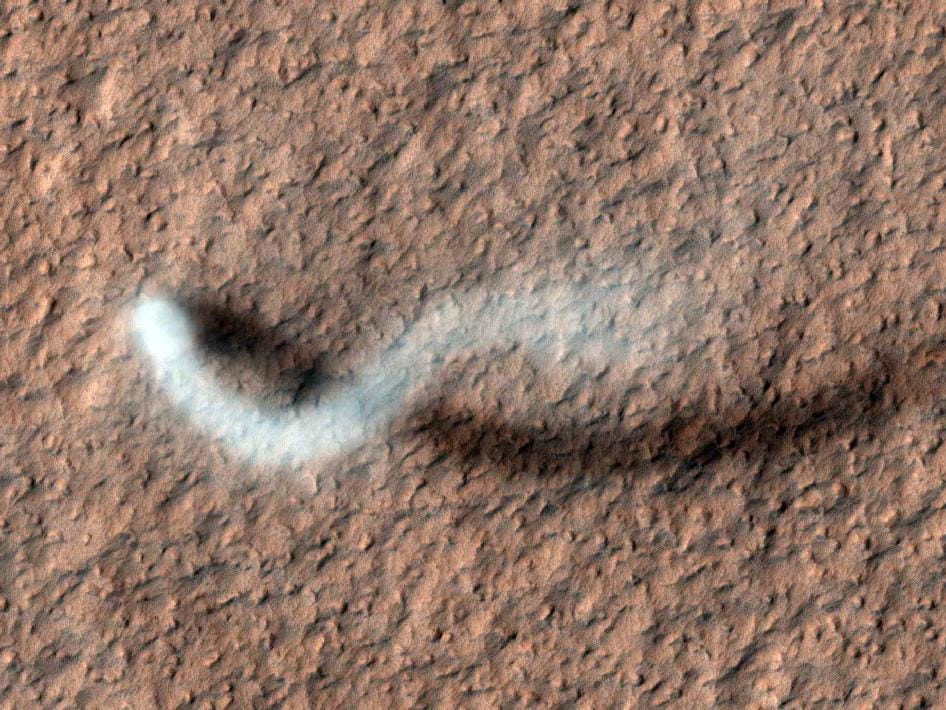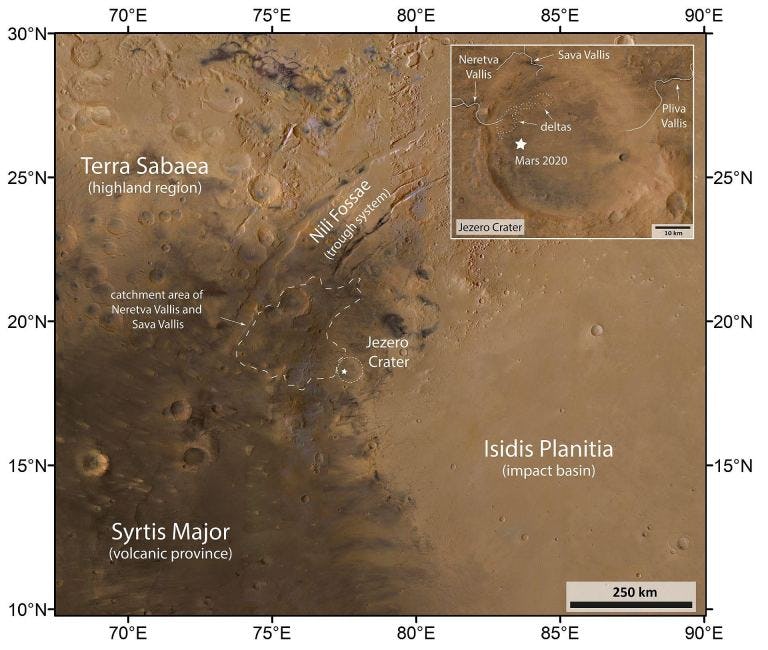
While the Mars InSight lander is still waiting for a passing dust devil to clean off its solar panels, it appears the Perseverance rover sees dust devils several times a day.
A new paper detailing the first 216 days of Perseverance’s mission in Jezero Crater reports how the newest rover on Mars appears to be located in a “dust storm track” that runs north to south across the planet. Jezero Crater has particularly high levels of dust and wind activity.
“Jezero Crater may be in one of the most active sources of dust on the planet,” said Manuel de la Torre Juarez, deputy principal investigator of Perseverance’s weather instruments. “Everything new we learn about dust will be helpful for future missions.”

The research team — led by Claire Newman of Aeolis Research — reports that, on average, four dust whirlwinds pass the rover daily. There is a period over noon local time where typically more than one dust devil per hour whizzes near the rover. Additionally, strong wind gusts produced by daytime convection cells over the crater frequently lifted dust into the air over a wide area creating a local dust cloud. One such event covered ten times more area than the largest dust devil.
“Every time we land in a new place on Mars, it’s an opportunity to better understand the planet’s weather,” said Newman, adding there may be more dusty weather on the way. “We had a regional dust storm right on top of us in January, but we’re still in the middle of dust season, so we’re very likely to see more dust storms.”
Not only did the rover detect hundreds of dust devils since it landed in Jezero Crater in February 2021, but Perseverance also captured the first video ever recorded of wind gusts lifting a massive Martian dust cloud.
The rover includes a suite of sensors called the MEDA (or the Mars Environmental Dynamics Analyzer). MEDA includes wind sensors, light sensors that can detect whirlwinds as they scatter sunlight around the rover, and a sky-facing camera for capturing images of dust and clouds. The rover’s suite of cameras is also used to monitor the weather and look for passing dust devils.
“We think these gust-liftings are infrequent but could be responsible for a large fraction of the background dust that hovers all the time in the Martian atmosphere,” Newman said.
Since Perseverance is nuclear-powered, the rover team doesn’t have to worry about dust collecting on any solar panels and impacting the mission. But it appears there is more dust lifting into the air in Jezero Crater, Newman said in a press release, even though the “average wind speeds are lower there, and peak wind speeds and whirlwind activity are comparable to Elysium Planitia,” where InSight is located, about 3,452 km (2,145 miles) away.
While wind and dust are prevalent all over Mars, the dust storm track in Jezero Crater could be due to factors such as the roughness of its surface, which can make it easier for the wind to lift dust. While the dust devils are of interest scientifically and aesthetically, sand carried in these windstorms damaged MEDA’s two wind sensors.
The team said they suspect the sand grains harmed the thin wiring on the wind sensors, which stick out from Perseverance’s mast. These sensors are particularly vulnerable because they must remain exposed to the wind in order to measure it correctly. The Curiosity rover also had wind sensors damaged by dust and debris churned up during its landing in Gale Crater.
Even with additional protective coatings on MEDA’s wires, damage still occurred, emphasizing the damaging nature of the Martian dust.
De la Torre Juarez said the team is testing software changes that should allow the wind sensors to keep working.
“We collected a lot of great science data,” de la Torre Juarez said. “The wind sensors are seriously impacted, ironically, because we got what we wanted to measure.”
This article was originally published on Universe Today by NANCY ATKINSON. Read the original article here.







